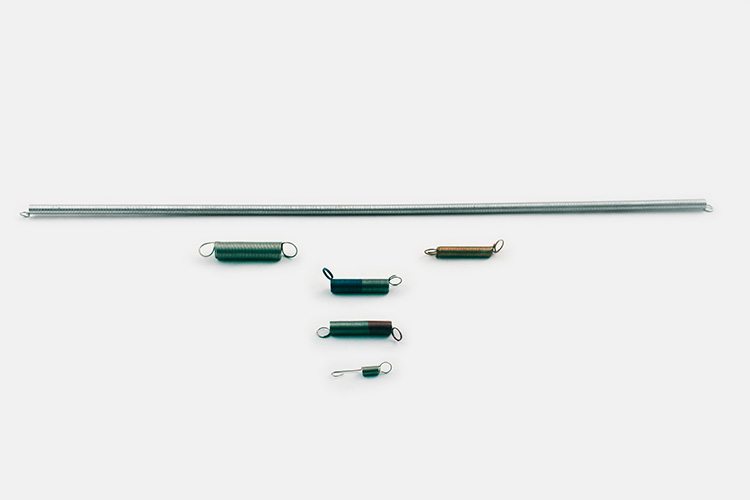Get unique, complex parts easily. No matter your requirements, Chaoyi Spring creates hard-to-produce coil springs and wire forms.
Let us help you create the custom wire form you need, from S-hooks and J-hooks to utility hooks and more.
We work closely with customers across a wide range of industries, helping them design and manufacture made-to-order parts.
Why choose Chaoyi Spring? We prioritize customer-focused collaboration, modern equipment and the latest technology to make your parts per print.
Find the information and guidance you need, from measuring a spring to learning about materials, placing an order and much more.
Imagine a spring, that quintessential symbol of resilience and energy storage. Now, picture it compressed by 0.62 meters. What happens to this humble coil of metal? Well, the world of


Imagine a spring, that quintessential symbol of resilience and energy storage. Now, picture it compressed by 0.62 meters. What happens to this humble coil of metal? Well, the world of physics comes alive, revealing a fascinating interplay of forces, energy, and motion. In this article, we'll delve into the mechanics of a spring compressed by this specific distance, exploring the concepts of Hooke's Law, potential energy, and the fascinating behavior of springs under stress. Get ready to unravel the secrets hidden within this seemingly simple act of compression.

At the heart of this investigation lies Hooke's Law, a fundamental principle governing the behavior of elastic materials. This law states that the force exerted by a spring is directly proportional to its extension or compression, but only within the elastic limit. In simpler terms, the more you compress a spring, the harder it pushes back, and the more you stretch it, the stronger it pulls back. This proportionality is expressed mathematically as F = -kx, where F is the force, k is the spring constant (a measure of the spring's stiffness), and x is the displacement from its equilibrium position.
In our scenario, a spring is compressed by 0.62 meters. This compression represents the 'x' value in Hooke's Law. To determine the force exerted by the spring, we need to know the spring constant (k). Each spring possesses a unique spring constant, determined by its material, shape, and dimensions. Imagine a spring made of a strong, rigid material like steel. It would have a higher spring constant compared to a spring made of a more flexible material like rubber.
Compressing a spring isn't just about applying force; it's about storing potential energy. As you push down on the spring, you're doing work against its restoring force, and this work is converted into potential energy. This stored energy is like a coiled-up energy reservoir waiting to be released. Think of it as a slingshot storing potential energy in the stretched rubber band. The more you compress the spring, the greater the amount of potential energy it stores. This potential energy is calculated using the formula: PE = (1/2)kx², where PE represents potential energy.
In the case of a spring compressed by 0.62 meters, the potential energy stored would depend on the spring constant (k). A stiffer spring, with a higher k value, would store more potential energy for the same compression. This stored energy is ready to be unleashed when the spring is allowed to return to its original length.
When the compression force is removed, the spring, driven by its innate elastic nature, springs back to its original length. This return journey is powered by the stored potential energy. The energy stored within the spring is released, transforming back into kinetic energy (energy of motion). The spring's stored potential energy manifests as a force that pushes the object it's connected to, causing it to accelerate. The faster the spring rebounds, the greater the kinetic energy it transfers to the object.
Think of a child bouncing on a trampoline. The trampoline springs store potential energy as they are compressed by the child's jump. When the springs release, the stored potential energy is converted into kinetic energy, propelling the child upward. Similarly, the force exerted by a spring compressed by 0.62 meters will propel an object, imparting momentum and speed.
In the real world, springs don't just perfectly store and release energy. There's a phenomenon called damping, where some energy is lost during the spring's oscillation due to factors like friction and air resistance. This damping effect causes the oscillations to gradually diminish over time.
Springs find a myriad of applications in our everyday lives and within complex machinery. From the shock absorbers in our cars, ensuring a smooth ride, to the delicate springs in our watches, keeping time precisely, these coils of metal play a vital role. In mechanical systems, springs are employed for everything from storing energy in wind-up toys to providing a restoring force in valves.
So, when you see a spring compressed by 0.62 meters, remember that this seemingly simple act embodies a fascinating world of physics. Hooke's Law dictates the force exerted, potential energy is stored, and the stored energy is unleashed as the spring returns to its original state. From the everyday to the extraordinary, springs are more than just coils; they're examples of fundamental physical principles at work, shaping our world in countless ways.
The compression of a spring, seemingly a simple action, unveils a universe of fascinating physics. It's a testament to the power of stored energy and a reminder that even the smallest components can hold immense potential. Next time you see a spring, take a moment to appreciate the mechanics at play, and marvel at the unseen forces that govern its behavior.
Browse some of the custom wire forms and springs that we manufacture. Don’t see what you need? We specialize in made-to-order products that meet your application requirements.
Visit Our GalleryNeed a custom wire form or coil spring? We make it work. Fill out the contact form and a representative will respond within 1 business day. If you have a PDF or CAD file, you can submit to request a quote.